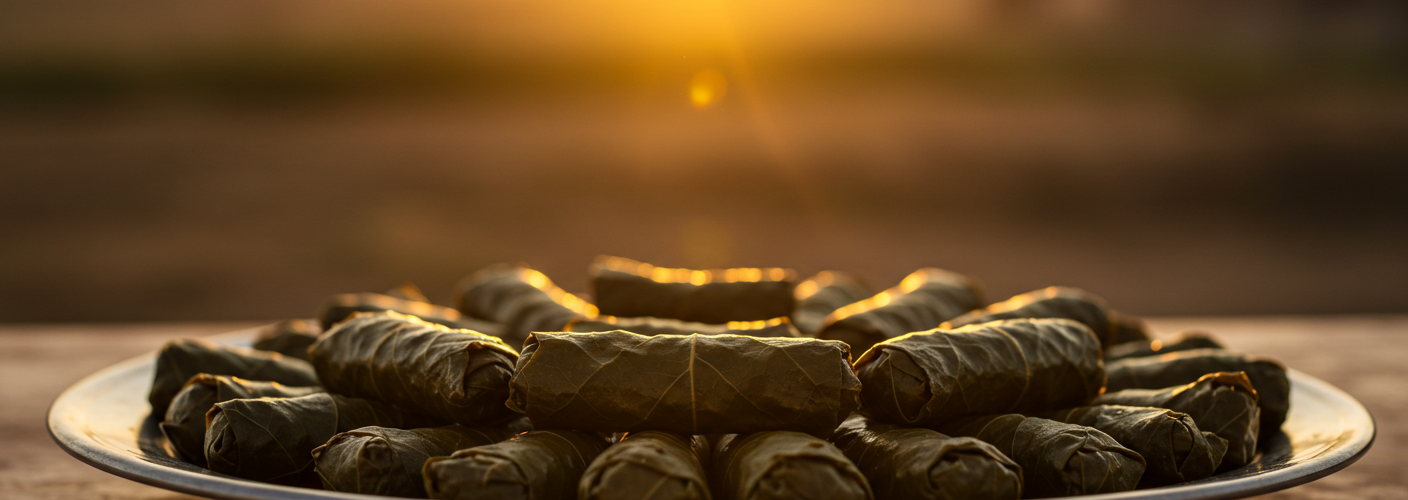When it comes to Middle Eastern cuisine, few dishes are as beloved and versatile as stuffed grape leaves, particularly in their Syrian iteration known as Yalanji. This dish, often relished as an appetizer, side dish, or even a main course, beautifully combines the flavors of land and sea, evoking the essence of Syrian culinary traditions. For those eager to try their hand at this delicious treat, understanding the unique aspects of Syrian Yalanji is key.
The Heart of Yalanji
At its core, Yalanji is a delightful creation featuring grape leaves, typically harvested from vines that flourish under the Syrian sun. These leaves, tender, yet robust, are the perfect canvas for a medley of ingredients. Unlike their meat-filled counterparts found in other regions, Syrian Yalanji is typically vegan, highlighting an exquisite blend of rice, fresh herbs, and spices.
Key Ingredients
The primary ingredient of Yalanji is long-grain rice, which provides the perfect texture and absorbs the assorted flavors. Fresh herbs such as parsley and mint impart a refreshing brightness, while spices like cinnamon and allspice add depth to the mixture. A notable element that distinguishes Syrian Yalanji is the inclusion of tomatoes, either finely chopped or as a puree, which gives the dish a delightful tanginess.
Additional ingredients can offer a unique twist; for example, some variations include pine nuts or chickpeas, enhancing both texture and nutritional value. Seasoning is crucial, as the right combination can elevate the taste to extraordinary levels, making every bite a small celebration of Syrian heritage.
The Art of Rolling
Preparing Yalanji isn’t just about mixing ingredients; it embodies a cultural tradition that has been passed down through generations. The process begins with washing and preparing the grape leaves, typically blanching them briefly to soften and make them pliable. Once the filling is ready, the art of rolling comes into play. Each leaf is meticulously filled with a spoonful of the rice mixture and then rolled tightly, resembling a small pouch. The goal is to create a compact roll that will keep the stuffing intact during cooking.
Cooking Method
Yalanji can be cooked in various ways, with the most common method being simmering. Cooked efficiently on low heat, the rolled grape leaves are layered in a pot, sometimes topped with additional slices of tomatoes to enhance the flavor. A mixture of olive oil and water is poured over them, and they are cooked until the rice is tender. This slow-cooking method allows the flavors to meld beautifully, resulting in an aromatic dish that’s not just pleasing to the palate but also a feast for the eyes.
Serving and Enjoying Yalanji
Once cooked, Syrian Yalanji is typically served warm or at room temperature, often garnished with lemon wedges and accompanied by a side of yogurt or tahini for dipping. This makes an ideal dish for sharing among family and friends, embodying the spirit of communal dining that is integral to Syrian culture.
In conclusion, Syrian Yalanji is more than just stuffed grape leaves; it is a culinary tradition that showcases the harmonious relationship between flavors, techniques, and culture. Whether you’re a connoisseur of Middle Eastern cuisine or a curious novice, trying your hand at Yalanji promises not just a delightful dish but an enriching experience that connects you to the rich heritage of Syria. So gather your ingredients, embrace the rolling technique, and prepare to savor these delightful parcels filled with love and history.




Add comment